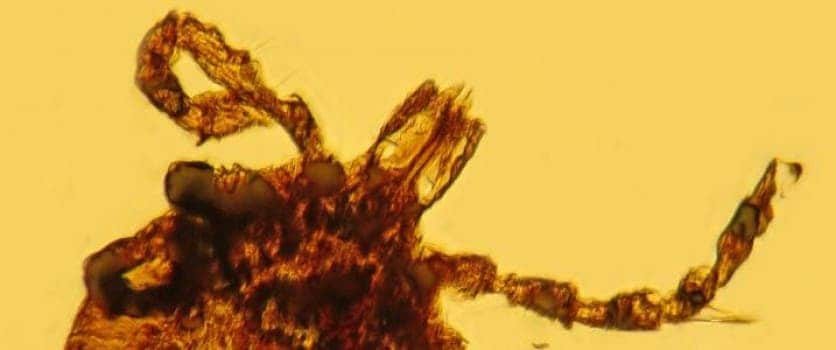Lyme disease is a stealthy disease, which can be very dangerous, especially if misdiagnosed. It was only recognized officially 40 years ago, but now, a new amber research has shown that the bacteria causing it may have been around for over 15 million years – long before any human was walking on Earth. The study indicates tick-related illnesses have been around for the entire history of the human race.
Researchers from the Oregon State University (OSU) were studying amber from the Dominican Republic when they came across samples with Borrelia, a type of spirochete-like bacteria that to this day causes Lyme disease. The results were published in Historical Biology.
Ticks and the bacteria they carry are very opportunistic,” said George Poinar, Jr., a professor emeritus in the Department of Integrative Biology of the OSU College of Science, and one of the world’s leading experts on plant and animal life forms found preserved in amber. They are very efficient at maintaining populations of microbes in their tissues, and can infect mammals, birds, reptiles and other animals.
In a related study, published in Cretaceous Research, the same team announced the first fossil record of Rickettsial-like cells, a bacteria that can cause various types of spotted fever. The samples they analyzed however were much older – over 100 million years old.
As summer arrives and millions of people start heading for the outdoors, it’s important to be aware of the danger posed by ticks. Given the long period in which the bacteria has been around, researchers think that Lyme disease did much more damage than previously believed – but the diseases was never diagnosed.
“In the United States, Europe and Asia, ticks are a more important insect vector of disease than mosquitos,” Poinar said. “They can carry bacteria that cause a wide range of diseases, affect many different animal species, and often are not even understood or recognized by doctors. It’s likely that many ailments in human history for which doctors had no explanation have been caused by tick-borne disease.”
In 30 years of studying diseases revealed in the fossil record, Poinar has documented the ancient presence of such diseases as malaria, leishmania, and others. The oldest documented case of Lyme disease is the Tyrolean iceman, a 5,300-year-old mummy found in a glacier in the Italian Alps.
“Before he was frozen in the glacier, the iceman was probably already in misery from Lyme disease,” Poinar said. “He had a lot of health problems and was really a mess.”
Interestingly enough, at a 1909 research conference, Swedish dermatologist Arvid Afzelius presented a study about an expanding, ring-like lesion he had observed in an older woman following the bite of a sheep tick. He named the lesion erythema migrans – but it wasn’t until 1975 that the disease was properly identified and started being treated. Still, numerous cases are misdiagnosed even today. If you are bitten by a tick, be sure to visit your doctor!
Journal References: George Poinar. Spirochete-like cells in a Dominican amberAmbylommatick (Arachnida: Ixodidae). Historical Biology, 2014; 1 DOI: 10.1080/08912963.2014.897699
George Poinar. Rickettsial-like cells in the Cretaceous tick, Cornupalpatum burmanicum (Ixodida: Ixodidae). Cretaceous Research, 2014; DOI: 10.1016/j.cretres.2014.02.007



